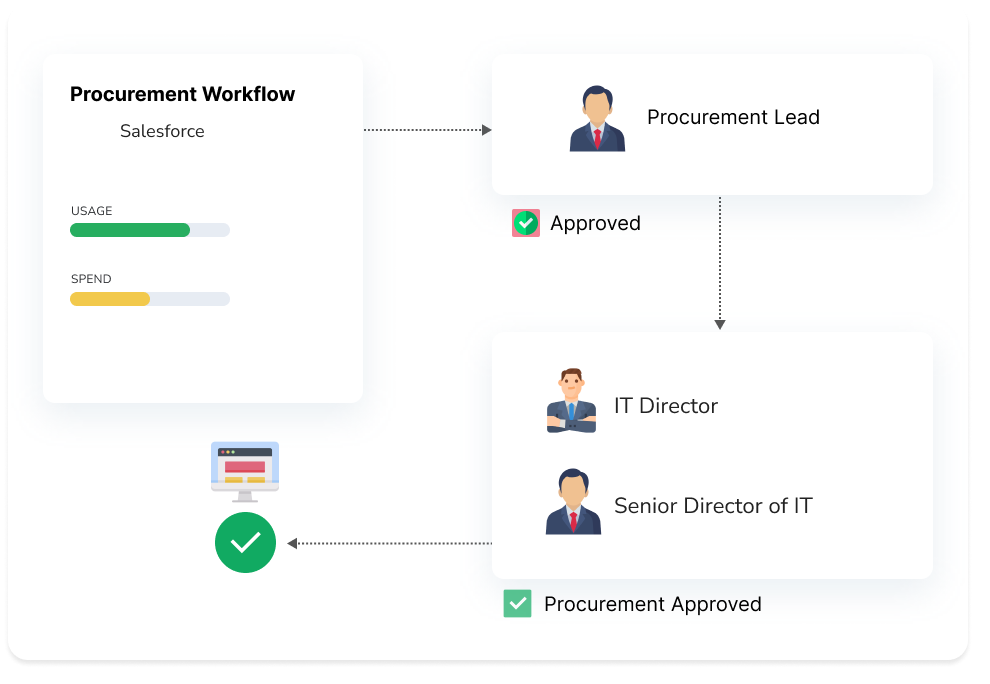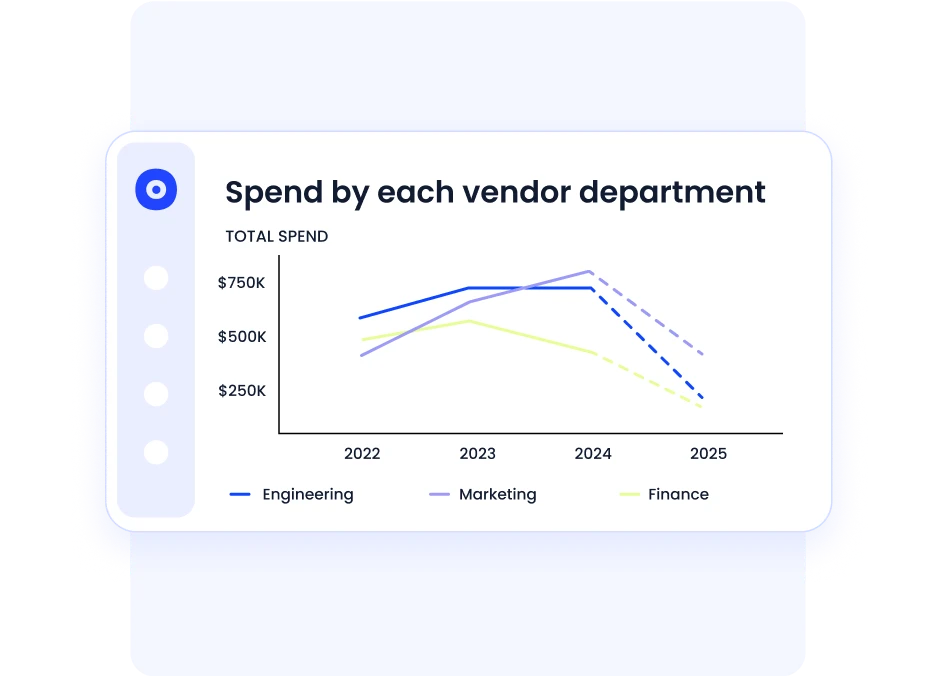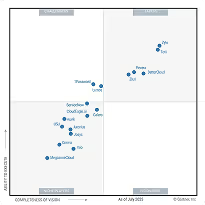HIPAA Compliance Checklist for 2025

Procurement teams are tasked with sourcing the best vendors while minimizing risk, staying on budget, and ensuring a seamless fit with organizational needs. However, this can be a difficult balance to achieve, especially when faced with incomplete or misleading information from potential suppliers.
That's where RFI data (Request for Information) becomes invaluable.
By leveraging structured RFI responses, procurement teams can reduce risk and make smarter, data-driven buying decisions. This blog will explore how to use RFI data to enhance your procurement process, reduce risks, and ensure more informed decisions.
Without structured data, this process can become a guessing game, leading to misalignments, hidden risks, and unnecessary costs.
In this blog, you’ll learn how to turn RFI data into a powerful decision-making engine.
We’ll break down how procurement teams can use structured responses to compare vendors accurately, uncover hidden risks, strengthen compliance checks, and streamline evaluations.
1. TL;DR
- RFI data gives procurement teams early, structured insight into vendor stability, security, product fit, and long-term viability reducing surprises later in the buying cycle.
- By scoring and comparing responses using a consistent, weighted model, procurement leaders can quickly identify high-risk vendors and spotlight those that best match business needs.
- Automation tools like CloudEagle.ai amplify the impact of RFI data by centralizing compliance evidence, powering AI-driven comparisons, and optimizing SaaS spend with real-time benchmarks.
- When used effectively, RFI data becomes a proactive risk-mitigation engine that streamlines vendor selection, strengthens compliance, and helps teams make confident, data-backed procurement decisions.
2. What is RFI Data?
An RFI (Request for Information) is a document used by procurement teams to gather high-level information from potential suppliers. The data gathered typically includes vendor capabilities, product specifications, pricing models, compliance measures, and more. RFI data serves as a foundation for decision-making during the supplier evaluation process.
RFI data is crucial because it provides a structured view of each vendor’s offerings and their alignment with your organization's needs. Unlike an RFP (Request for Proposal) or RFQ (Request for Quote), which dive deeper into pricing and solution details, an RFI focuses on obtaining a broad understanding of what vendors can deliver.
3. Key RFI Data Points to Reduce Procurement Risk
To minimize procurement risks, it’s important to focus on the right aspects of RFI data. The following key points help identify potential risks early on:
1. Vendor Stability and Financial Health
Vetting a vendor’s financial health helps identify any potential long-term risks. Key RFI questions might include:
- What is your company’s revenue over the last three years?
- Do you have any recent audit reports to share?
- What is your financial outlook and funding status?
Understanding the financial stability of a vendor ensures that they won't face sudden shutdowns or funding issues, which could disrupt your operations.
2. Security and Compliance Standards
Security and compliance are critical to safeguarding your data and meeting regulatory requirements. Ask for specifics such as:
- What security certifications (SOC 2, ISO 27001, GDPR, HIPAA) do you hold?
- How is customer data encrypted, both at rest and in transit?
- What is your process for managing access control?
By examining these aspects of RFI data, procurement teams can avoid bringing in vendors that could expose the organization to security breaches or non-compliance.
3. Product Fit and Scalability
Vetting a vendor’s product offerings ensures the solution is suitable for your needs today and scalable for the future. Important questions to ask include:
- Does your product align with our business requirements?
- Can the solution integrate with our existing systems?
- How does your product evolve? What does your roadmap look like?
These questions help ensure the vendor’s product can meet both your current and future needs, reducing the risk of outgrowing the vendor’s solution.
4. Support and Service Levels
A strong support system is vital for addressing issues that arise post-purchase. To assess this, ask:
- What support channels do you offer (email, phone, chat)?
- What SLAs (Service Level Agreements) do you provide for critical issues?
- How do you handle customer success and onboarding?
Support questions help ensure that the vendor will be there when you need them most, preventing disruptions to your business operations.
4. How to Analyze RFI Data for Smarter Decisions
Once you’ve gathered RFI data from your vendors, the next step is analyzing and comparing the responses to make an informed decision. Here’s how to do that effectively:
1. Scoring Vendor Responses with a Weighted Model
A weighted scoring model helps prioritize the most important factors, such as security, product fit, and financial stability. You can score each RFI response on these key factors, ensuring that the most critical elements influence your decision-making.
For example, security could have a higher weight compared to pricing or support, ensuring that the decision prioritizes vendors that pose minimal risk to your organization’s security.
2. Comparing Responses Using Automation Tools
Manual comparison of RFI responses can be time-consuming and prone to errors. Using automation tools helps streamline the comparison process. These tools can analyze and score responses in real-time, providing procurement teams with a side-by-side view of vendors' strengths and weaknesses.

CloudEagle.ai, for example, offers an AI-powered solution that automates vendor comparison, allowing teams to evaluate multiple vendors with ease.
3. Categorizing Vendors into Tiers
To make decision-making simpler, categorize vendors into A, B, and C tiers based on their fit and risk levels:
- A-Tier: Strong alignment with business needs, minimal risk
- B-Tier: Moderate fit, some gaps in product offerings or risk factors
- C-Tier: Significant risks, misalignment with business needs
By tiering vendors, you can easily focus on the strongest candidates and avoid wasting time on vendors that don’t meet your core requirements.
5. Benefits of Using RFI Data in Procurement
Using RFI data effectively offers numerous benefits for procurement teams:
1. Minimizing Surprises in Pricing and Product Fit
With RFI data, procurement teams can better understand the true capabilities of a vendor, including potential hidden costs or limitations. This reduces the likelihood of unexpected price increases or product limitations down the road.
2. Reducing Security and Compliance Risks
By gathering detailed insights into vendors’ security protocols and compliance certifications, you can avoid exposing your company to legal or reputational risks. This also ensures that vendors meet your industry’s regulatory standards.
3. Making Data-Driven Decisions Quickly
The structured data provided by RFIs enables quicker and more confident decision-making. Rather than relying on gut instinct or incomplete information, procurement teams can base their decisions on hard data, ensuring better outcomes.
6. How CloudEagle.ai Enhances Procurement Using RFI Insights
CloudEagle.ai is a comprehensive solution designed to help procurement teams streamline their processes, enhance decision-making, and reduce overall SaaS spend through advanced features like automated discovery, centralized management, and AI-driven optimization. Here's how:
Automated Vendor Discovery

CloudEagle.ai’s AI-driven platform automates the discovery of potential vendors, providing quick insights into market offerings and benchmarking. It goes beyond simple vendor listing and provides detailed information on each vendor’s performance, service capabilities, and pricing structures.
Key Feature: 500+ direct integrations that provide visibility into various SaaS products, ensuring procurement teams have access to comprehensive, up-to-date information.
Benefit: This saves valuable time by eliminating manual research and reducing the risk of overlooking optimal vendor options during procurement cycles.
Centralized Security & Compliance Data

CloudEagle.ai centralizes vendor risk assessments and compliance certificates, streamlining the due diligence process. The platform automatically extracts and organizes critical compliance data such as SOC2 reports, GDPR compliance, and more from vendor contracts and documents.
Key Feature: Automated contract metadata extraction and integration with systems like Okta, Microsoft AD, Coupa, and others help create a unified view of security and compliance statuses.
Benefit: Procurement teams no longer need to sift through scattered documents and spreadsheets. Instead, they can quickly assess a vendor’s security posture, ensuring that compliance risks are minimized and contracts meet industry standards.
AI-Powered Vendor Comparison
CloudEagle.ai simplifies vendor comparisons by allowing procurement teams to assess RFI responses side-by-side, considering key criteria such as price, security, scalability, and contract terms.

Key Feature: The platform supports AI-powered benchmarking for pricing and contract terms, helping procurement teams identify whether they are paying fair prices based on market standards.
Benefit: Teams can confidently make more informed decisions with reduced risk of overpaying or locking into unfavorable terms.
SaaS Spend Optimization & License Harvesting

CloudEagle.ai empowers procurement teams to optimize SaaS spend by identifying underutilized or duplicate licenses across the organization. By leveraging automated license harvesting and AI-driven optimization, the platform identifies savings opportunities and reallocates unused licenses where they are needed.
Key Feature: Automated workflows for deprovisioning unused licenses and AI-powered app rationalization that reduces SaaS waste by detecting and eliminating duplicate apps.
Benefit: This approach helps companies cut unnecessary spending by as much as 10-30%, ensuring that the procurement team isn’t overspending on unused or redundant tools.
Streamlined Renewals Management
CloudEagle.ai supports renewal orchestration by automatically tracking renewal dates, generating workflows, and notifying procurement teams in advance of contract expirations. It also provides renewal optimization insights, leveraging historical data to forecast pricing changes and usage trends.

Key Feature: The Centralized AI Repository stores contract details, renewal dates, and contract terms, ensuring no renewals are missed and optimizing the procurement cycle with AI-driven contract intelligence.
Benefit: Procurement teams can proactively manage renewals, negotiate better terms, and prevent last-minute scrambling to renegotiate contracts, thus avoiding unplanned cost spikes.
Unified Spend & Usage Insights

CloudEagle.ai provides procurement teams with a single dashboard that offers 100% visibility into the organization’s entire SaaS stack, including usage metrics, license utilization, and spend trends.
Key Feature: The platform aggregates data from all SaaS contracts and employee usage logs, allowing procurement teams to monitor software spend in real time and optimize purchases.
Benefit: This unified view reduces the chances of over-purchasing or underutilizing resources, improving cost efficiency across the entire tech stack.
By combining AI-driven insights, automation, and centralized governance, CloudEagle.ai not only enhances procurement efficiency but also drives significant cost savings, making it a crucial tool for modern procurement teams looking to optimize their SaaS portfolios and improve compliance.
7. Conclusion
Using RFI data to reduce procurement risk and make smarter buying decisions is not just about gathering information, it’s about analyzing that information strategically. By leveraging structured RFI responses, procurement teams can identify risks early, compare vendors more effectively, and make decisions that align with business goals.
CloudEagle.ai helps streamline this entire process with AI-powered tools, making it easier to evaluate vendors quickly, reduce procurement risk, and drive better business outcomes.
Ready to make smarter, data-driven procurement decisions? Explore how CloudEagle.ai can enhance your supplier evaluation process and help you reduce procurement risk.
FAQ Section:
1. What is RFI data, and why is it important in procurement?
RFI data refers to responses from vendors that provide insights into their capabilities, pricing, security, and compliance. It is crucial for assessing vendors early in the process and reducing procurement risks.
2. How can RFI data help mitigate procurement risk?
RFI data highlights key factors such as vendor financial stability, security posture, and product scalability, helping procurement teams identify potential risks before making purchasing decisions.
3. What are the best practices for using RFI data in vendor selection?
Best practices include using a weighted scoring model, automating response comparisons, and categorizing vendors into tiers based on fit and risk. This ensures that the right vendors are selected efficiently.

%201.svg)








.avif)




.avif)
.avif)




.png)









